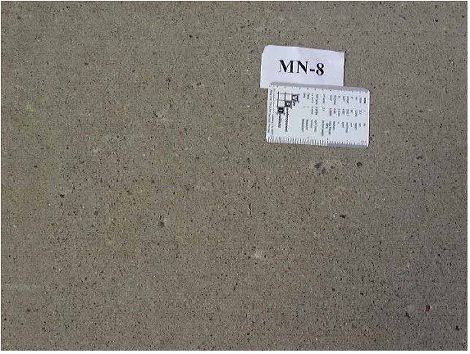U.S. Department of Transportation
Federal Highway Administration
1200 New Jersey Avenue, SE
Washington, DC 20590
202-366-4000
Federal Highway Administration Research and Technology
Coordinating, Developing, and Delivering Highway Transportation Innovations
 |
| This report is an archived publication and may contain dated technical, contact, and link information |
|
Publication Number: FHWA-RD-02-083 Date: August 2006 |
Previous | Table of Contents | Next
This appendix describes the condition surveys performed in 1998 and 2001 and includes the photos that were taken in 1994 and 2001. The condition surveys in 1994 showed no deterioration whatsoever. These sections were constructed in 1992, so the 2001 survey represents 9 years of service. Note that no de-icing salts were applied to these concrete pads.
MN1 Section 1—15 percent fly ash, 3.9 percent air content
1998: Very light surface scaling (visible sand particles are about 0.2 mm diameter) over the whole surface.
2001: Very light loss of surface mortar observed throughout the pad—probably consistent with expectations for 9-year-old PCC. There are several skid loader surface scratches present on this pad. Three or four small popouts (<25.4 mm diameter, <12.7 mm deep) are present, but there is no significant scaling or spalling. The surface condition is relatively uniform and the pad is generally in excellent condition with respect to durability.
MN2 Section 2—15 percent fly ash, 2.7 percent air content
1998: Very light surface scaling (visible sand particles are about 0.2 mm diameter) over the whole surface.
2001: Five or more popouts are visible, mostly small ones, but one is medium-sized (~31.75 mm in diameter, 12.7 to 19.05 mm deep). There is one large spall adjacent to a core hole from previous test specimen retrieval. There is generally more loss of surface mortar than was observed for MN1, and there is a whitish, crystalline-looking deposit in the surface texture of some of the areas with mortar loss. Some skid loader damage (surface scratches/gouges) runs in the east-west direction. The surface is generally in good condition with respect to durability.
MN3 Section 3—15 percent fly ash, 2.0 percent air content
1998: Similar very light surface scaling as sections 1 and 2, with a band about 400-500 mm wide in the direction of brooming having visibly less scaling.
2001: A few larger popouts are visible on this pad (~38.1 mm in diameter, 12.7 to 19.05 mm deep). More loss of surface mortar is observed throughout the pad, especially at the east end. The surface color and texture of the pad is less uniform, and the original broomed surface texture is difficult to see in some areas of mortar loss. Overall, the surface is in fair to good condition.
MN4 Section 4—No fly ash, 2.5 percent air content
1998: Similar very light scaling, with a band about 600 mm wide having less scaling.
2001: There is one large popout (50.8+ mm in diameter, 19 mm deep) near the west end of the pad. There is a large spall adjacent to a 101.6-mm core hole at the west end of the slab. There is some loss of surface mortar (and evidence of the same whitish crystalline deposits observed in MN2), but texture is generally good and uniform throughout. No significant spalling or scaling is present. Overall condition is good to very good.
MN5 Section 5—No fly ash, 1.5 percent air content
1998: Light scaling, with enough scaling in a few places to obscure the brooming marks.
2001: There is heavier loss of surface mortar throughout, resulting in localized elimination of the broomed surface texture. There is no significant scaling or spalling/fraying of joints. The heaviest loss of mortar and texture is along a .3 m to .6 m band along the south edge of the pad, which is characterized by a darker color. The whitish crystalline deposits are visible in other areas of the pad. There are some skid loader marks oriented in a north-south direction in the southwest quarter of the pad. The overall general condition of the pad is considered good.
MN6 Section 6—30 percent fly ash, 3.8 percent air content
1998: Scaling is generally very light, but about 5 to 10 percent of the total section area is scaled enough to obscure the brooming marks. The visible sand particles in these areas are in the 0.5 mm to 2 mm size range.
2001: There is localized heavy loss of mortar and surface discoloration along various lines that suggest localized water problems under plastic curing sheets. There is a large spall at the southeast corner of the pad. A few small popouts are present throughout the pad. No significant spalling or scaling was observed. The pad is in generally good condition with respect to durability except for the presence of the locally heavy mortar loss probably associated with the plastic curing cover.
MN7 Section 7—30 percent fly ash, 1.4 percent air content
1998: Light scaling over entire area. Streaks of scaling heavy enough to obscure broom marks are present throughout the section to a total of about 20 percent of the section area; these are generally adjacent to areas showing excessive paste (possibly an artifact of plastic placed on the concrete for curing before the concrete was initially set).
2001: There is again heavy mortar loss along various "plastic covering" lines in the east half of the pad. The loss is fairly deep (3.18 to 6.35 mm, locally) and the broomed texture is gone in these areas. There are also areas of what appear to be coring slurry or grey epoxy on the pad surface. A few small popouts are present throughout the slab. There is light fraying (25.4 to 50.8 mm long, <12.7 mm wide) at two joint locations. There is a large spall in the southeast corner of the pad. Slab texture at the west end of the pad is generally good and uniform (no evidence of plastic sheeting problems).
MN8 Section 8—"High-Carbon Concrete (MnDOT Experimental)," 5.6 percent air content
1998: Very light scaling throughout the section, with a few small streaks of unscaled concrete and also a few streaks of slightly heavier scaling.
2001: There are skid loader marks/gouges present, many in the northeast and southeast corners and one along the south edge of the pad. There are also areas of slurry or gray epoxy on the surface in the east third of the pad. There is moderate mortar loss throughout the pad, especially in the southwest corner of the pad. There is light fraying along the north-south joint between the two panels on the south side of the pad, and one frayed area extends 12.7 to 19 mm from both sides of the joint for a distance of about 76.2 mm. A few small popouts are scattered throughout the pad. The pad surface is generally in good condition with respect to apparent freeze-thaw durability problems.
Summary
From 1998 to 2001 there was heavier loss of surface mortar throughout those sections with the lowest air content (section 3 with 2 percent; section 5 with 1.5 percent; and section 7 with 1.4 percent) resulting in localized elimination of the broomed surface texture. More loss of surface mortar was observed throughout these pads. However, there was no significant scaling or spalling/fraying of joints.
The MnDOT standard mix (except for lower air), section 1 (3.9 percent air), had only a very light loss of surface mortar throughout the pad—probably consistent with expectations for 9-year-old PCC.
Had these sections been subjected to substantial de-icing salts over the past 9 years, it is expected that those with the lowest air voids would have shown much greater surface deterioration.
Note that some of the photos taken in May 2001 could not be taken of the center joint because MnDOT maintenance was storing materials on the pads.
Figure A1. Section MN1—1994.
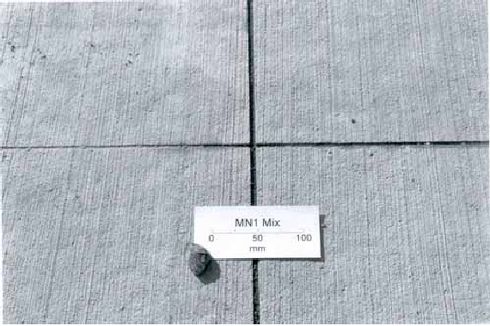
Figure A2. Section MN1—May 2001.
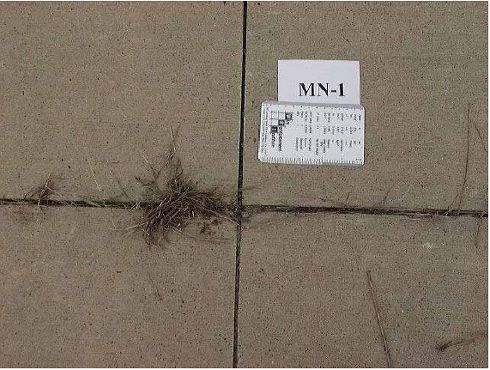
Figure A3. Section MN2—1994.
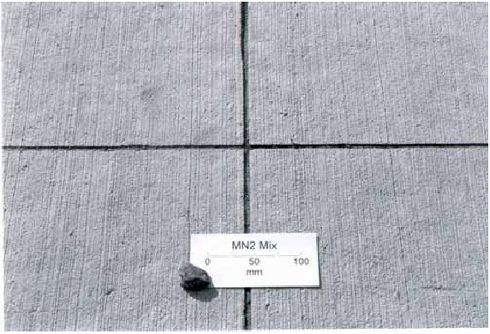
Figure A4. Section MN2—May 2001.
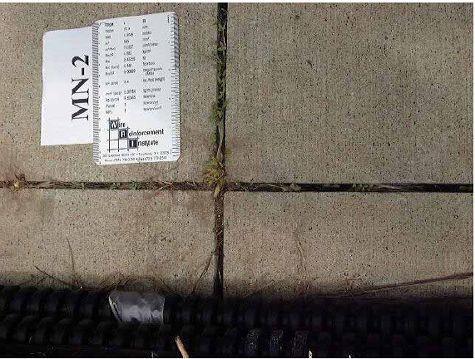
Figure A5. Section MN3—1994.
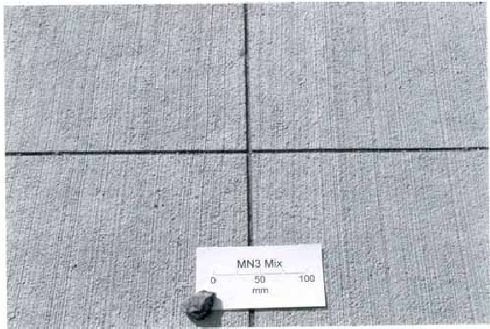
Figure A6. Section MN3—May 2001.
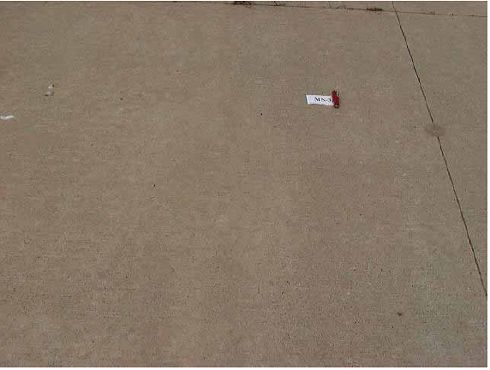
Figure A7. Section MN4—1994.
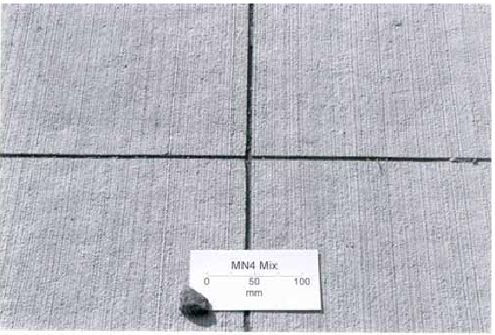
Figure A8. Section MN4—May 2001.
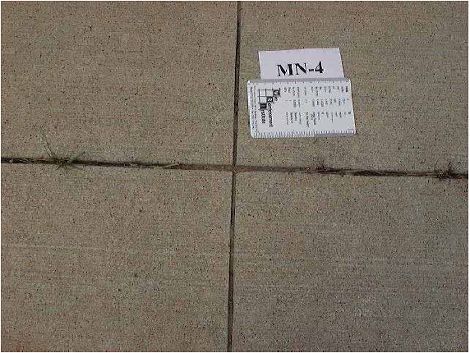
Figure A9. Section MN5—1994.
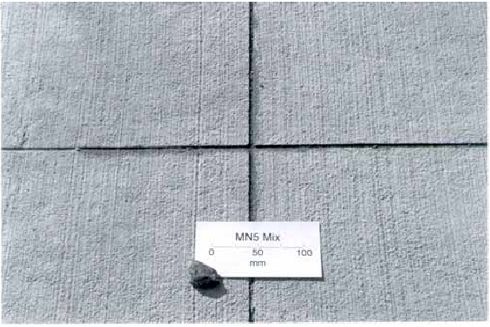
Figure A10. Section MN5—May 2001.
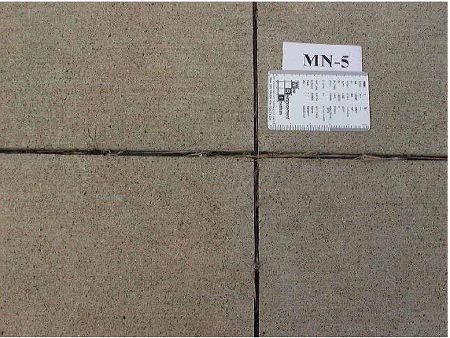
Figure A11. Section MN6—1994.
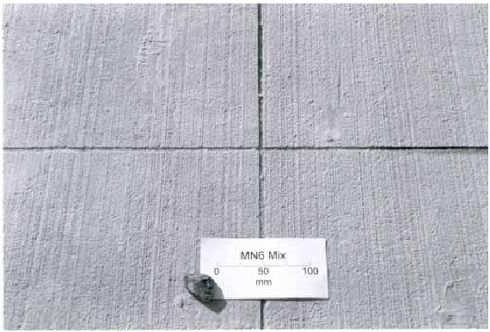
Figure A12. Section MN6—May 2001.
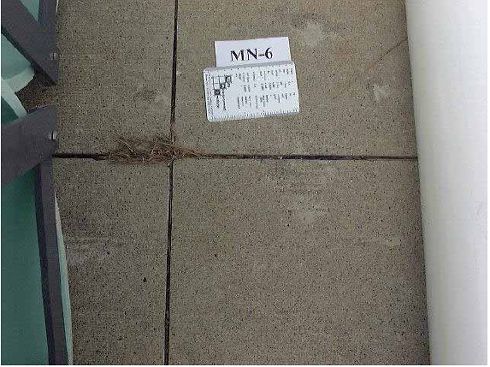
Figure A13. Section MN7—1994.
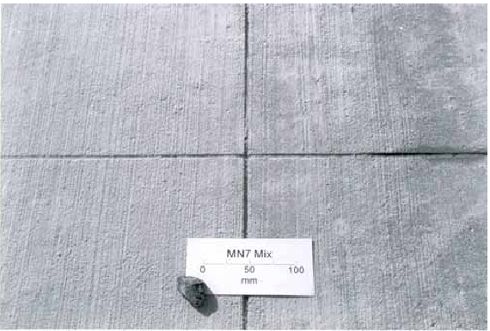
Figure A14. Section MN7—May 2001.
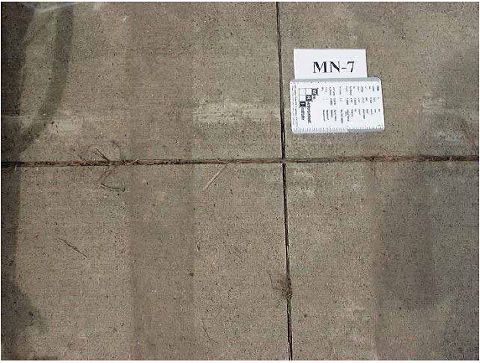
Figure A15. Section MN8—1994.
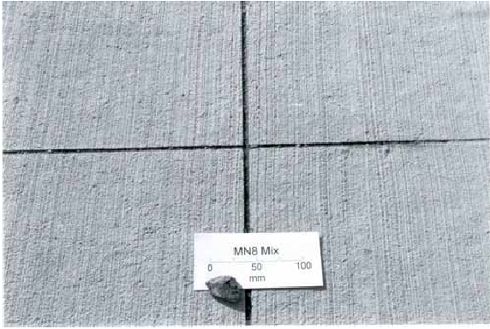
Figure A16. Section MN8—May 2001.
